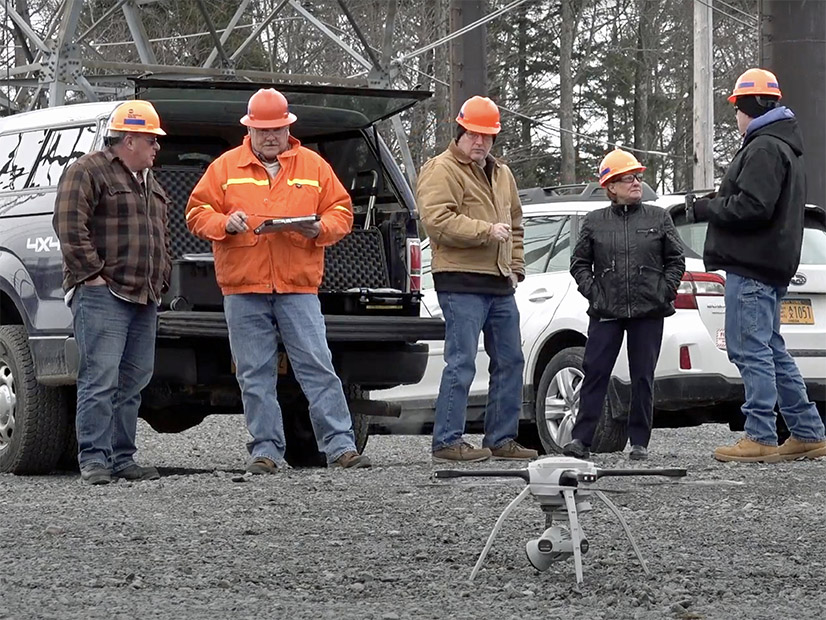The New York Power Authority is going all-in on drones, launching a $37.2 million program to expand their use for inspections as a safety, efficiency and economy measure.
NYPA’s Board of Trustees on Thursday approved an initial $9.6 million allocation to launch the five-year Unmanned Aerial System program.
Drones have been gaining favor for years as a tool to inspect transmission lines. It is much slower to have a line person climb up for a visual check and much more expensive to fly over in a helicopter. And with both of those options, the implications of an accident are much worse.
Even a substation inspection is safer with a drone, as it does not put anyone close to high voltage.
The nation’s largest state-owned utility operates 1,400 circuit-miles of transmission lines. But it also has bridges, dams, waterways, fossil fuel generating stations and conventional and pumped hydropower facilities to monitor and maintain.
NYPA’s drones are equipped with high-resolution cameras and sensors that can detect flaws not visible to the human eye. The authority plans to make as much use of them as it can.
“By bringing more drones into our day-to-day operations, we can better harness the benefit of automation, safety and consistency across our assets while reducing costs and insuring a more reliable power supply,” NYPA Robotics Program Manager Peter Kalaitzidis said in a news release. “Inspections can be improved and expanded to include other areas and assets. With use of drone technology, we can more easily capture the real-world state of our operations to support real-time decision-making.”
NYPA has trained nearly 100 pilots and has been getting its drones out to its operating units to allow them to figure out their own best uses for the technology.
The goal now is to buy more hardware and software; expand and improve training; standardize policies and procedures; and develop a platform from which to gather and make the best use of data recorded on each flight.
The authority is keeping its regulatory compliance up to date as well. Earlier this year it received its first waiver from the Federal Aviation Administration to operate drones beyond the pilot’s line of sight. NYPA said this will be useful at its Blenheim-Gilboa Pumped Storage Power Project, which sprawls more than 2 miles across very rugged terrain.


